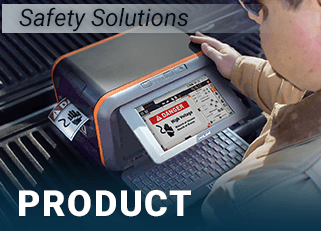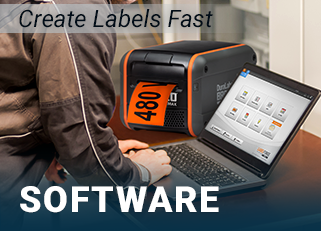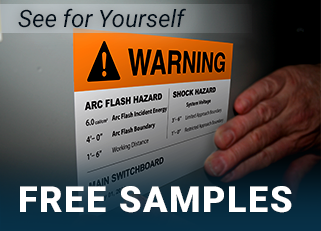Getting Started with your DuraLabel Printer
03
February,
2023
2 MINUTE READ
Webinar | Getting Started with your DuraLabel Printer
Getting Started with your DuraLabel Printer
Become an expert at operating your printer
- Understand the benefits of thermal transfer printing
- Get tips for choosing supply and designing labels
- Follow along to design labels using labeling software
 9 mins
9 mins Presented By

Brian McFadden
Technical Writer
Compliance Specialist
Related Resources
No content related to this webinar
Transcript
Webinar Preview
Contents of the Getting Started with your DuraLabel Printer Webinar:
- How thermal transfer printers work
- How to choose the right supplies for your labeling application
- How to make label designs using DuraSuite and LabelForge design software
Excerpt from the Getting Started with your DuraLabel Printer Webinar transcript:
How Your Printer Works
Most of the DuraLabel printers use a thermal transfer process, which is different from your typical office printer. Understanding that process will help your keep your printer running smoothly.
A thermal transfer printer uses a printing ribbon, a think plastic film with a coating of colored resin on one side-that's the ink for the printing process. The paper is your label stock, usually made of vinyl with an adhesive backing. When you print a label, the resin side of the printing ribbon is pressed against the smooth side of your label stock and together the two are passed underneath the print head. That print head includes a line of tiny heating elements, when these elements heat up, the colored resin gets transferred from the ribbon onto the label stock-thermal transfer-turning those elements on and off as the supplies move past the print head creates a pattern on your printed label. It's very fast and the result is very durable.
The limitation of thermal transfer printing is that the color of your print is determined by the supplies that are loaded. Your label stock is the color of your background, and your printing ribbon is the color of your print, so you get a basic, two-color label. To make multi-color labels, you need a label stock that has some colors already in place, like these DANGER labels, the red header is already there, so if you use a black ribbon to print your details, you'll get a white label with a red header and black information-three colors. That's how you make an ANSI-compliant DANGER label. And the basic idea is the same for any number of colors or designs.
Since you need a different label stock for different types of labels, there are a lot of options. That's not just different designs, but also different materials with different attributes. It's important to match your supplies with to your application. Most of the time, you'll probably use a Premium Vinyl label stock in a color of your choice and a Premium Black or White printing ribbon. There are our most popular materials and they work great for a wide variety of situations. But some applications need something different.
The most common problem our customers run into with Premium Vinyl is that it won't properly adhere to certain surfaces; especially things like rough concrete or powder-coated metal. For those kind of surfaces, our Ultra-Aggressive label stock will do much better. The next most common problem is chemical resistance, especially in facilities with chemical cleaning sprays. Harsh wash-downs can scour the text right off the label. For these situations, we recommend a specialty printing ribbon, often our Petroleum Resistant or DuraChem varieties. These ribbons have a more chemical resistant resin or ink, this way your print stays printed. There are over 50 supply types, so we won't discuss them all right now.
If you aren't sure what to choose, just give us a call. We're always glad to help you find the best solution for your needs. I'll show the best contact information for our support team at the end of the webinar. Now that you've chosen your supplies, it's time to load them into your printer. Since different printers have slightly different loading steps, we'll provide links to the different loading videos at the end of this webinar.
To learn the about common types of visual signals, and practical guidance on maximizing the value of visuals in your facility, watch the full webinar on demand now!
RELATED RESOURCES
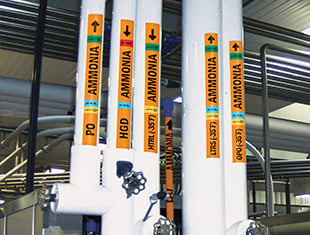
Ammonia Pipe Marking
Webinar | Ammonia Pipe Marking Ammonia Pipe Marking Improve the safety of complex ammonia refrigeration ...
Watch Now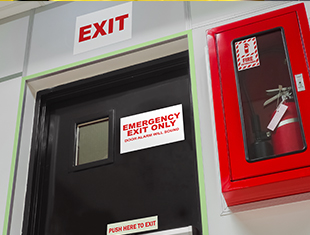
Preparing for Facility Emergencies
Webinar | Preparing for Facility Emergencies Preparing for Facility Emergencies Prepare your facility against ...
Watch Now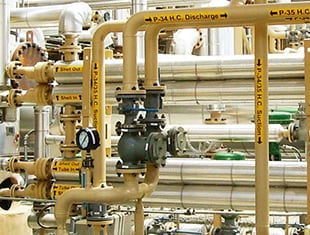
Practical Pipe Marking
Webinar | Practical Pipe Marking Practical Pipe Marking Prepare your facility for safer, simpler, and more ...
Watch Now.png)
